Time:2025-06-19
Neon strip lights have long been a captivating element in the lighting industry, renowned for their vibrant glow and distinctive aesthetic appeal. These lights have transcended their traditional use in signage to become a versatile solution for a wide array of applications, spanning from residential decor to large - scale commercial projects. With continuous advancements in technology, neon strip lights have evolved to offer enhanced functionality, energy efficiency, and design flexibility. This article aims to provide an in - depth exploration of neon strip lights, covering their technology, benefits, applications, and key considerations for selection and installation.
The Technological Foundation of Neon Strip Lights
Traditional Neon vs. Modern LED - based Neon Strip Lights
Historically, neon strip lights relied on glass tubes filled with neon gas or a mixture of noble gases, such as argon and krypton. When an electric current passed through these gas - filled tubes, the gas atoms became excited and emitted light. The color of the light was determined by the type of gas used and the application of phosphors on the inner surface of the tube. This traditional technology created the iconic bright and colorful glow associated with neon lights.
In contrast, modern neon strip lights often utilize LED technology. LED - based neon strip lights offer several advantages over their traditional counterparts. LEDs are semiconductor devices that convert electrical energy directly into light, resulting in higher energy efficiency and longer lifespan. They also generate less heat, reducing the risk of fire hazards and making them safer to use. Additionally, LED - based neon strip lights can produce a wide range of colors and lighting effects, providing greater design flexibility.
Construction and Materials
Regardless of the lighting technology used, the construction of neon strip lights is designed to ensure durability and flexibility. The outer casing of neon strip lights is typically made from materials like silicone or plastic. Silicone is a popular choice due to its excellent flexibility, allowing the strip lights to be bent and shaped to fit various surfaces and designs. It also offers good resistance to environmental factors such as moisture, UV radiation, and temperature fluctuations, making the strip lights suitable for both indoor and outdoor applications.
Inside the casing, the electrical components are carefully arranged to ensure a stable and consistent light output. For LED - based strip lights, the LED chips are mounted on a flexible circuit board, which is then encased in the protective material. In traditional neon strip lights, the gas - filled tubes are supported by a framework that maintains their shape while allowing for flexibility.
Electrical and Control Systems
Neon strip lights require a reliable electrical system to power them. For traditional neon lights, a high - voltage transformer is needed to supply the necessary electrical current to ionize the gas within the tubes. In the case of LED - based neon strip lights, a low - voltage power supply is typically used, which is not only safer but also more energy - efficient.
Control systems play a crucial role in enhancing the functionality of neon strip lights. Modern neon strip lights often come with various control options, including remote controls, dimmer switches, and smart home integration. These controls allow users to adjust the brightness, change the color (in RGB - enabled strip lights), and create dynamic lighting effects. Some advanced control systems even enable synchronization with music or other external stimuli, adding an extra layer of creativity to the lighting display.
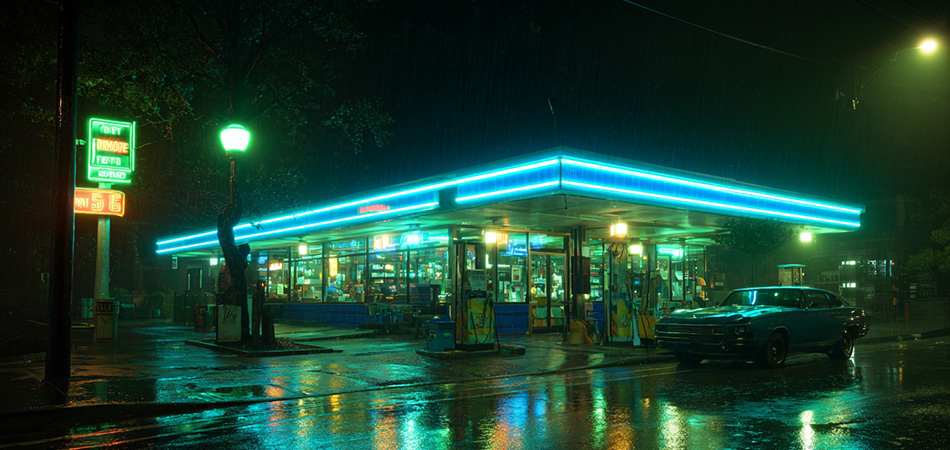
Key Advantages of Neon Strip Lights
Striking Visual Appeal
The most prominent advantage of neon strip lights is their ability to create a visually stunning impact. The bright and vivid colors of neon lights are highly attention - grabbing, making them ideal for drawing the eye and creating a focal point in any space. Whether used to outline architectural features, highlight products in a store, or add a decorative touch to a room, neon strip lights can transform the look and feel of an environment instantly.
The unique glow of neon lights also adds a sense of style and sophistication. They can evoke a nostalgic or retro atmosphere, or contribute to a modern and trendy aesthetic, depending on the design and color scheme. The soft, diffused light of neon strip lights can create a warm and inviting ambiance, while the more vibrant and intense colors can energize a space.
Energy Efficiency
Contrary to the perception that neon lights are energy - guzzlers, especially modern LED - based neon strip lights are highly energy - efficient. LEDs consume significantly less power compared to traditional lighting sources, such as incandescent bulbs. This energy efficiency not only helps users reduce their electricity bills but also has a positive impact on the environment by minimizing energy consumption and carbon emissions.
Even traditional neon strip lights have become more energy - efficient over time, with advancements in transformer technology and gas mixtures. The long lifespan of neon strip lights also means fewer replacements are needed, further reducing the overall energy and resources required for lighting.
Design Flexibility
Neon strip lights offer unparalleled design flexibility. Their flexible nature allows them to be installed in a variety of shapes and configurations. They can be bent around corners, wrapped around objects, or used to create intricate patterns on walls, ceilings, or floors. This flexibility makes them suitable for both simple and complex lighting designs, enabling designers and homeowners to bring their creative visions to life.
In terms of color, neon strip lights are available in a vast spectrum of hues, from classic reds, greens, and blues to more unique and custom - mixed colors. RGB - enabled strip lights offer the ability to change colors and create dynamic lighting effects, providing endless possibilities for customizing the lighting to suit different moods, events, or branding requirements.
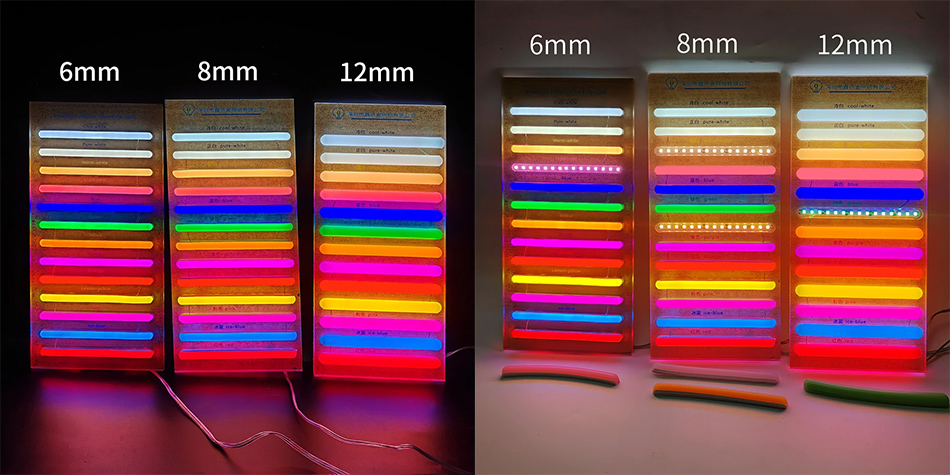
Diverse Applications of Neon Strip Lights
Residential Interior Decor
In residential settings, neon strip lights have become a popular choice for adding a touch of style and personality to interior spaces. In the living room, they can be installed behind the TV, along the ceiling coves, or under furniture to create a cozy and inviting atmosphere. The soft glow of neon strip lights can also be used to highlight architectural features, such as exposed beams or decorative moldings.
In the bedroom, neon strip lights can be placed behind the headboard or around mirrors to create a relaxing and romantic ambiance. They can also serve as nightlights, providing a gentle illumination without being too harsh on the eyes. In the kitchen, neon strip lights are often used for under - cabinet lighting, providing task illumination while adding a modern and stylish touch to the space.
Commercial and Retail Spaces
For commercial establishments, neon strip lights are a powerful marketing and branding tool. Retail stores can use them to create eye - catching window displays that showcase products and attract customers. The ability to customize the color, shape, and message of neon strip lights makes it easy for businesses to create a unique and memorable brand image.
In restaurants and cafes, neon strip lights can be used to set the mood and create a distinctive dining experience. They can be used to highlight the menu, create a focal point in the dining area, or add a touch of nostalgia with vintage - style neon signs. In offices and other commercial spaces, neon strip lights can be used to decorate common areas, create a more vibrant and engaging work environment, and improve employee morale.
Outdoor and Landscape Lighting
Neon strip lights are also well - suited for outdoor applications. Their durability and weather - resistance make them ideal for use in gardens, patios, and other outdoor spaces. They can be used to line pathways, illuminate flower beds, or highlight trees and shrubs, creating a beautiful and inviting outdoor environment.
For building facades, neon strip lights can be used to outline the architectural features, adding a dramatic and eye - catching element to the building's appearance at night. They can also be used for outdoor signage, making businesses more visible and recognizable from a distance. In outdoor event spaces, such as concert venues and festivals, neon strip lights can be used to create a festive and lively atmosphere.
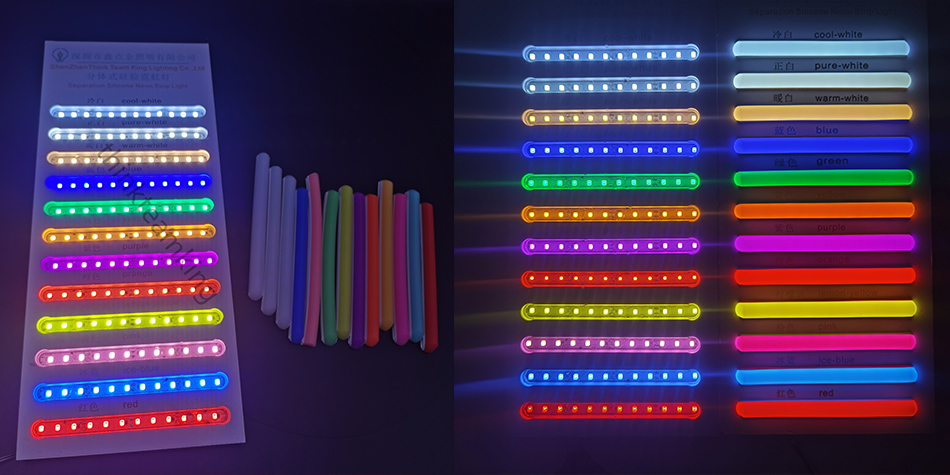
Choosing the Right Neon Strip Lights
Lighting Technology
When choosing neon strip lights, the first consideration is the lighting technology. LED - based neon strip lights offer energy efficiency, long lifespan, and a wide range of color options, making them a popular choice for many applications. However, traditional neon strip lights still have their charm, especially for those who prefer the classic neon look and are willing to accept the higher energy consumption and maintenance requirements.
Quality and Durability
The quality of the neon strip lights is crucial for their performance and longevity. Look for products from reputable manufacturers that use high - quality materials and components. Check for certifications, such as UL, CE, or RoHS, which indicate that the product meets safety and quality standards.
For outdoor use, ensure that the neon strip lights are rated for outdoor applications and have a high IP (Ingress Protection) rating, which indicates their resistance to water and dust. Inspect the construction of the strip lights to ensure that the outer casing is sturdy and the electrical connections are secure.
Compatibility and Control Options
Consider the compatibility of the neon strip lights with your existing electrical system and any control devices you plan to use. Make sure the power supply requirements of the strip lights match your available electrical source. If you want to use a dimmer switch, remote control, or smart home integration, ensure that the neon strip lights are compatible with these devices.
Also, check the ease of installation and the availability of installation accessories. Some neon strip lights come with adhesive backing, making them easy to install on smooth surfaces, while others may require additional mounting hardware.
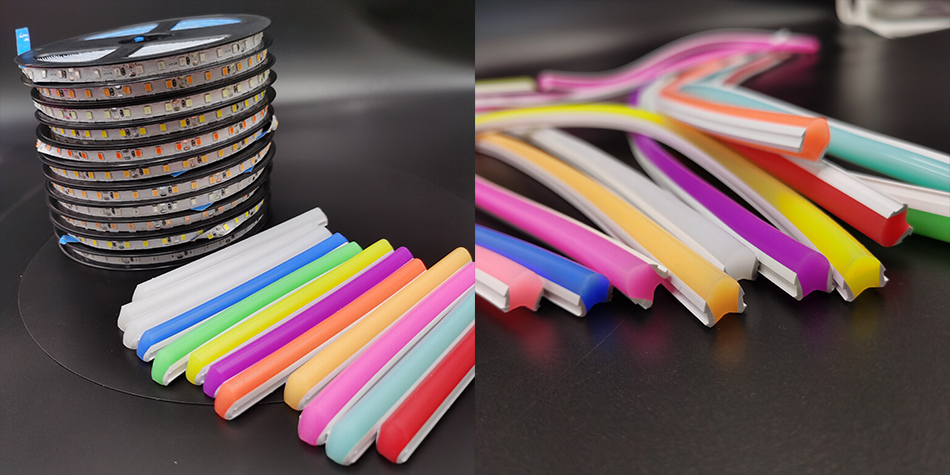
Installation and Maintenance of Neon Strip Lights
Installation Best Practices
Proper installation is essential for the optimal performance and safety of neon strip lights. Before installation, carefully read and follow the manufacturer's instructions. For LED - based neon strip lights with adhesive backing, clean the surface thoroughly where you plan to install the strip lights and then peel off the protective backing and press the strip firmly onto the surface.
If using mounting hardware, ensure that it is suitable for the type of surface and the weight of the strip lights. When connecting the neon strip lights to the power supply, make sure to turn off the power first to avoid the risk of electric shock. Use the appropriate wires and connectors, and ensure that all connections are secure and properly insulated.
For outdoor installations, pay extra attention to protecting the electrical connections from moisture. Use waterproof connectors and enclosures, and consider using a surge protector to safeguard the strip lights from electrical surges.
Maintenance Tips
Maintenance of neon strip lights is relatively straightforward. Regularly inspect the strip lights for any signs of damage, such as cracks in the casing, loose connections, or flickering lights. If you notice any issues, turn off the power immediately and troubleshoot the problem.
Clean the strip lights gently with a soft, dry cloth to remove dust and dirt. Avoid using abrasive cleaners or harsh chemicals, as they can damage the surface of the strip lights and affect their performance. For traditional neon strip lights, periodic maintenance may include checking and replacing the high - voltage transformer if necessary.
If a section of the LED - based neon strip light stops working, check the connections first. In some cases, a loose connection may be the cause. If the problem persists, it may be necessary to replace the faulty section of the strip light. Some strip lights are designed to be easily repaired by replacing individual segments.
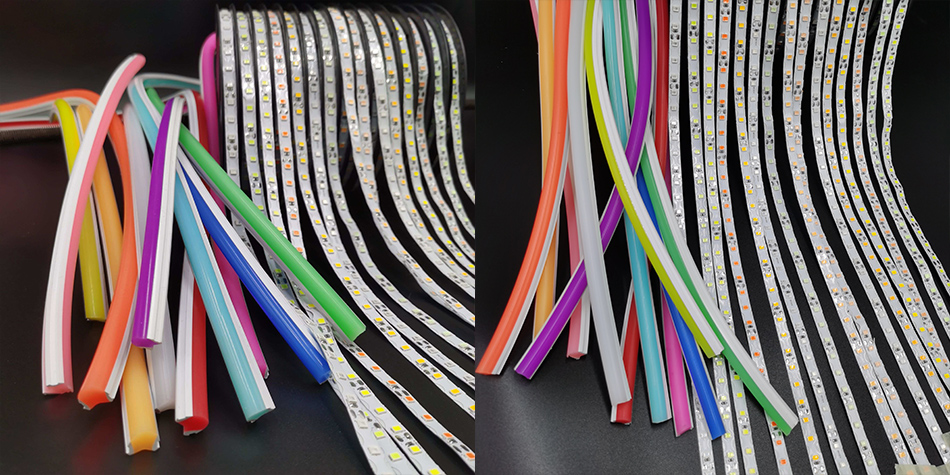
Future Trends in Neon Strip Lights
Smart Lighting Integration
The future of neon strip lights is likely to be closely intertwined with smart lighting technology. As the demand for smart homes and buildings grows, neon strip lights will increasingly be integrated with smart home systems. This will allow users to control the strip lights remotely using smartphones, voice assistants, or smart home hubs.
Smart features such as motion - sensing, scheduling, and synchronization with other smart devices will become more common. For example, neon strip lights could automatically turn on when someone enters a room, adjust their brightness based on the ambient light level, or change colors in response to music or other external stimuli.
Advancements in Materials and Design
Advancements in materials science will lead to the development of even more flexible, durable, and energy - efficient neon strip lights. New materials may offer better light - transmission properties, allowing for brighter and more uniform illumination. Additionally, the design of neon strip lights will continue to evolve, with more innovative and aesthetically pleasing options becoming available.
There may also be a greater focus on sustainability, with the use of recycled materials and more energy - efficient manufacturing processes. These advancements will not only improve the performance and functionality of neon strip lights but also make them more environmentally friendly.
Conclusion
Neon strip lights have come a long way since their inception, evolving into a versatile and innovative lighting solution that offers a wide range of benefits. From their striking visual appeal and energy efficiency to their design flexibility and diverse applications, neon strip lights have become an essential part of modern lighting design.
By understanding the technology, advantages, applications, and considerations related to neon strip lights, users can make informed decisions when choosing, installing, and maintaining these lights. As technology continues to advance, the future of neon strip lights looks bright, with exciting developments and innovations on the horizon that will further enhance their performance and expand their applications.